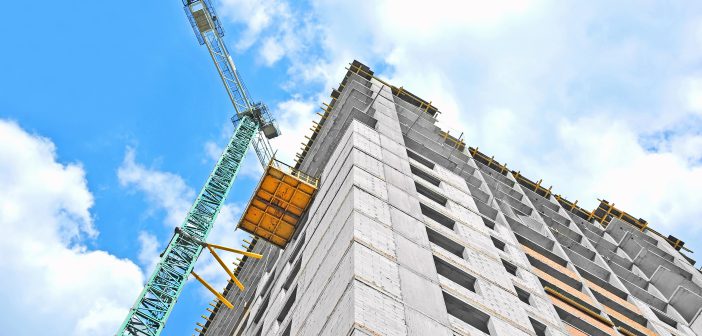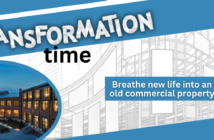Where are we in the hotel lodging cycle? And how does that position in the cycle relate to construction and development?
by LAURA KALCEVIC, STR
First, let’s define what the lodging cycle is: it’s how the relationship between supply and demand affects occupancy levels and average rate growth.
Typically, hotel operators will say the cycle occurs over a 7- to 10-year basis. The lending market is the ultimate backbone of this cycle – money becomes available to lend, new hotels are constructed, and occupancy levels decline as these new hotels are absorbed into the market. Once investors have loaned their maximum amounts, demand starts catching up to the new hotel supply, performance begins to improve and the cycle starts up again.
While records show this pattern repeating over the years, the ‘modern’ hotel industry is still relatively young. Academic study of the hotel industry is less than 100 years old, and the study of tourism as a recognized academic discipline didn’t start until the 1990s. STR was founded in 1985 and became the first company to track performance data for the U.S. lodging industry. Although the hotel lodging cycle is a relatively new concept, we have 30 years of data trends available to gauge where performance and supply development may be heading.

The above table provides the 30-year trend of occupancy levels for the U.S. Historically, performance has been stable, with the exception of downturns caused by 9/11 and the Great Recession. The nation’s average occupancy level over the past 30 years is 62.3 percent, and the median occupancy performance is 63.1 percent. Year over year, occupancy grew by an average of 0.2 percent, with a median growth rate of 0.3 percent.
Since 1987, hotel supply has increased by 72.3 percent. Meanwhile, during that period, demand increased 78.5 percent, which is in line with the global population continuing to rise and transportation becoming increasingly accessible.
The below table compares the pace of occupancy performance for the U.S. lodging market over the last three decades.

So, let’s circle back to the hotel lodging cycle. We have a solid 30-year trend line of occupancy performance that doesn’t show peaks and valleys. It shows stability that gets knocked down by large-scale tragedies and then recovers. Since we’re at the peak in 2017, are we going to start a downward trend because of new supply and the lending market? As a country, not necessarily, because as the data shows, it takes a significant “black swan” event to lower the national performance.
The concept of the hotel lodging cycle is correct as we know it, but it needs to be understood on a micro-level and overlaid with a well-known theory in tourism geography – Butler’s destination lifecycle model (Butler, 1980). This model lays out the cycle of a destination into a series of stages: exploration, involvement, development, consolidation and stagnation. Once the market reaches the stage of critical range of elements for capacity (a.k.a. consolidated hotel market), it either goes into immediate decline, decline, stabilization, reduced growth or rejuvenation. Developers need to fully understand this concept in order to construct a hotel in the correct market at the right time and to achieve the highest rate of return on their investment. Key questions to answer in determining the stage of the destination include: How many hotels are there in the market and what are the opening dates of the hotels? Was there a period of new supply introduction where multiple hotels opened? How many hotels are proposed for development? What’s driving the growth in development and how long will it last?

On a micro-level, the intersection of the hotel lending sector with the destination lifecycle merge to create the holistic hotel lodging cycle approach. If you are able to understand the area’s supply and correlate it to demand levels, you’ll be able to determine the cycle stage of the lodging market and whether or not it makes sense to develop a hotel in that location. Lenders and developers typically prefer building new hotels in the development and rejuvenation stages. Let’s relate this to six markets in the United States, shown in the table below.

Phoenix and Tampa have been consolidated markets since 1987, with more than 100,000,000 annual room nights available. Based on their performance, Phoenix is a market in decline and Tampa is a market in stabilization. Denver is still in the development stage, with occupancy performance continuing to experience strong gains with supply growth. Charlotte is experiencing reduced growth and recording a stable performance that is now on the upswing. Portland and Seattle are in rejuvenation, with occupancy performance dropping in the second decade and now recovering to their recorded performance in the first decade under review.
The next time you’re analyzing construction and development in a lodging market, remember to assess from the macro-level of the hotel lending cycle, as well as on the micro-level of the destination lifecycle, to fully understand the state of the location in a holistic hotel lodging cycle approach. ■
Laura Kalcevic is part of the STR Custom Forecast Team and has extensive global experience in the hospitality industry. She’s a graduate from the University of Queensland’s School of Tourism and Adjunct Professor at the New York University’s Preston Robert Tisch Center for Hospitality, Tourism, and Sports Management. Laura is also a state-certified appraiser, in which she’s performed hotel appraisals and consulting work throughout the U.S., Mexico, Canada, Central America, and the Caribbean. Laura applies her practical and academic experience to analyze hotel trends and forecast future performance.
Photo credit: Unkas Photo/Shutterstock.com




